JERUSALEM—As part of Independence Day celebrations, the Jay and Jeanie Schottenstein National Campus for the Archaeology of Israel in Jerusalem will reveal for the first time a unique stone capital decorated with an eight-branched menorah design dating back over 1,500 years.
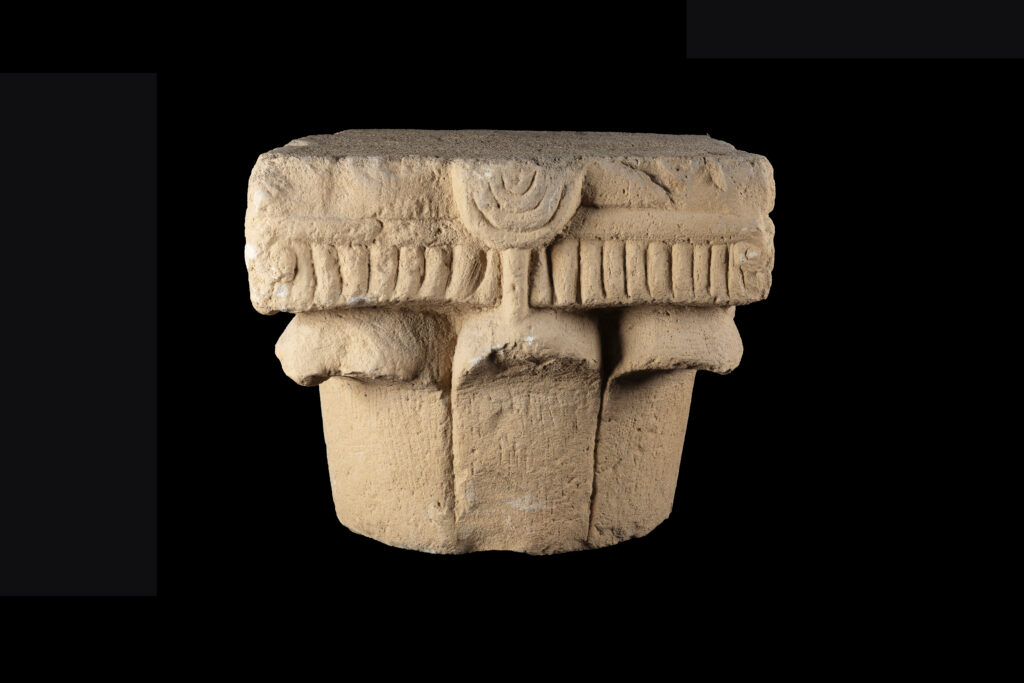
The stone capital. The only one of its kind in the world. Photo: Arkady Ostrovsky, Israel Antiquities Authority
The limestone capital, discovered in 2020 during Israel Antiquities Authority excavations before the construction of a new Jerusalem city entrance bridge, has been undergoing extensive scientific and historical investigations by experts from the Israel Antiquities Authority and the Hebrew University in Jerusalem. The excavation was financed by the Netivei Israel – National Transport Infrastructure Company.
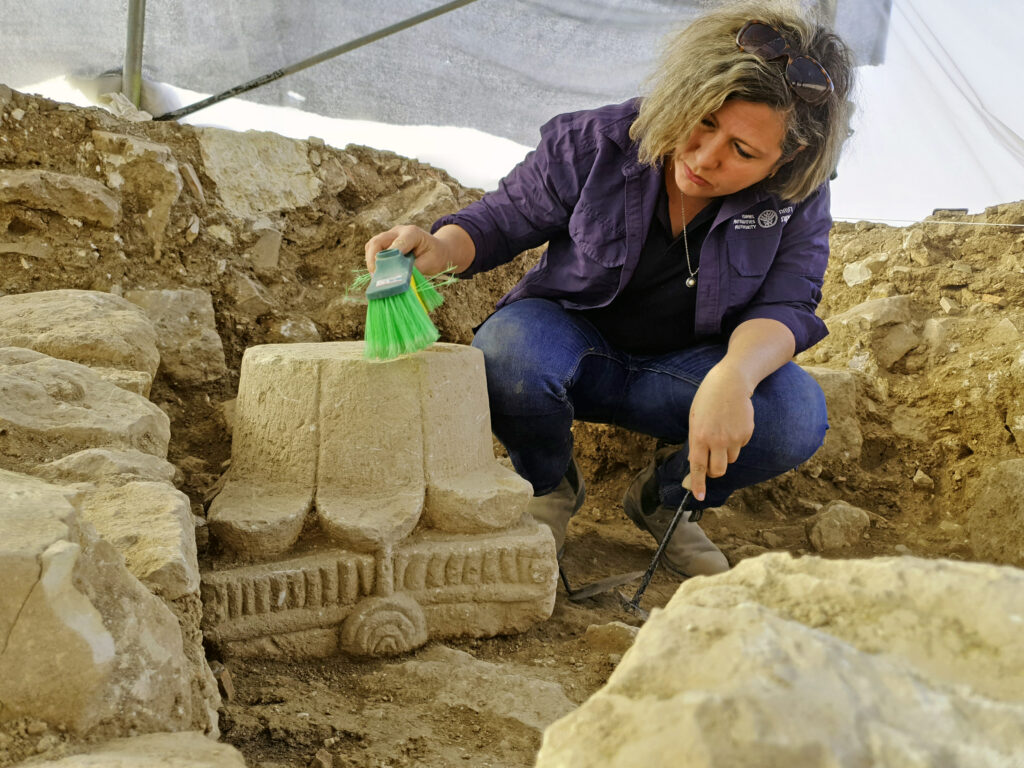
Anna Eirich, Excavation Director, cleans the capital after its discovery. Photo: Yoli Schwartz, Israel Antiquities Authority
This rare architectural artifact, which has no known archaeological parallels, was found upside-down on a room’s floor in a Byzantine building from the 6th to 7th century CE. Researchers believe it was placed in this structure in “secondary use”—repurposed from an even earlier structure.
“It seems this capital stood atop a column in a magnificent building or on a street, in a late Roman period settlement here (2nd-4th Century CE),” said Dr. Uzi Ad and Anna Eirich, excavation managers for the Israel Antiquities Authority. “From its local context, this settlement was populated by descendants of Roman army retirees. If so, what was a capital with a menorah decoration on it doing here, of all places – a distinct Jewish symbol? This is a true conundrum.”
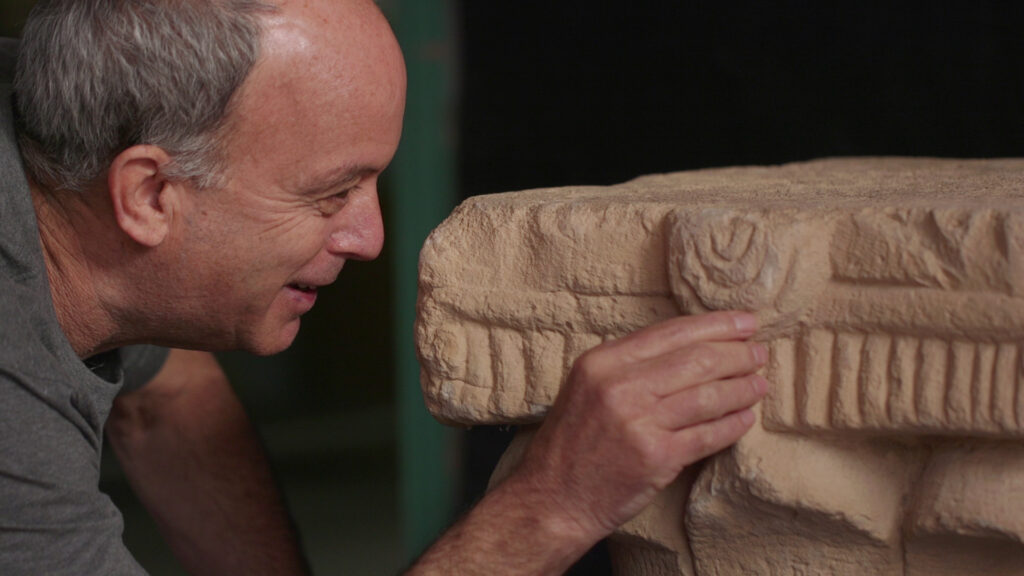
Dr. Uzi Ad, Excavation Director, with the rare stone capital. Photo: Emil Aladjem, Israel Antiquities Authority
The capital features an eight-branched candelabrum on each side of its upper section, while the lower section is decorated with eight leaves. A vertical element is incised above each middle leaf, appearing as the foot of the candelabrum.
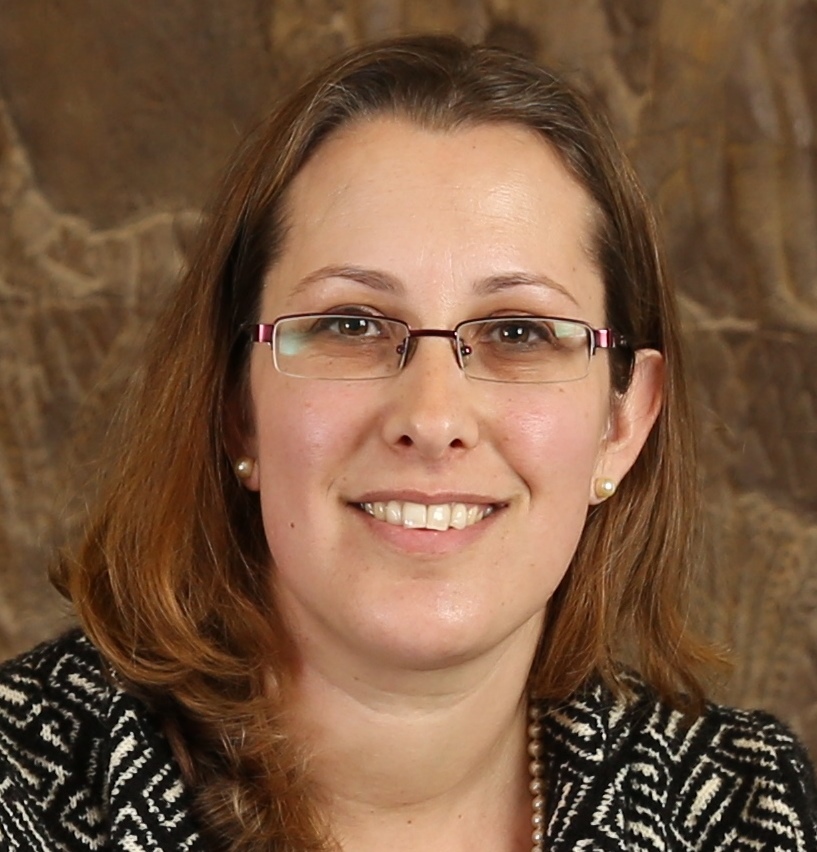
Dr. Orit Peleg-Barkat, architectural researcher, The Hebrew University of Jerusalem. Photo: The Hebrew University of Jerusalem
Dr. Orit Peleg-Barkat from the Hebrew University of Jerusalem, a specialist in ancient architectural decoration, explained the capital’s unique characteristics: “While Corinthian capitals with smooth leaves were common throughout our region from the late Second Temple through Byzantine periods, the capital discovered at Motza exhibits truly distinctive features. Despite being skillfully crafted, it appears to be the work of an artisan less familiar with architectural conventions prevalent in urban public structures.”
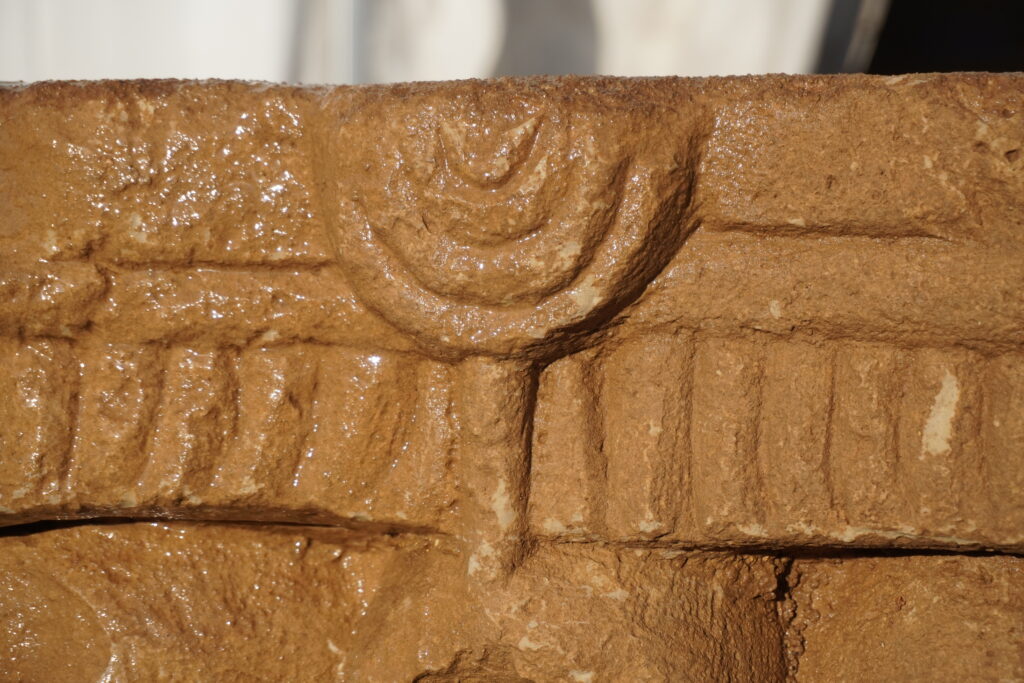
The capital as found in the field. Photo: Shai Halevi, Israel Antiquities Authority
She added, “Most significantly, the upper section—traditionally adorned with a floral motif—instead features what resembles an eight-branched menorah. This is particularly intriguing because seven-branched menorahs typically appear on capitals from the late Roman and Byzantine synagogues, such as those found at Capernaum and Caesarea. The absence of evidence suggesting a synagogue at this site raises questions about the capital’s original purpose and context. It’s possible the craftsman intended to carve a conventional flower design, but, due to his limited familiarity with standard models, created something resembling a symmetrical eight-branched lamp.”
Dr. Yuval Baruch, Deputy Director of Archaeology at the Israel Antiquities Authority and a researcher of the menorah symbol, emphasized the artifact’s significance: “The stone capital from Motza in the Jerusalem hills, decorated with the eight-branched menorah design, is unique, and a rare kind of discovery. Especially due to its findspot, its importance should not be underestimated.”
“A few decades after the Second Temple’s destruction, the menorah became the distinct symbol of the Jewish people, both in the Diaspora and in the Land of Israel. Finding objects decorated with menorahs, certainly on heavy stone objects, is a clear indication of the existence of a Jewish settlement,” Dr. Baruch explained.
He continued, “Now, let us consider that historical texts supported by archaeological research show that the Jewish settlement in Judea—and especially in the Jerusalem hills—suffered a great blow as a result of the Bar Kokhba revolt in the 2nd century CE—in fact, it can be considered eliminated in this region. Based on this reality, it is reasonable to surmise that this capital was brought from a destroyed site elsewhere merely to serve as useful building material in secondary usage.”
Israeli Minister of Heritage, MK Rabbi Amichai Eliyahu, commented on the discovery: “The discovery of the stone capital adorned with a menorah provides tangible evidence of the profound and undeniable connection between the Jewish people, Jerusalem, and the Land of Israel throughout thousands of years. This rare archaeological find, unparalleled anywhere in the world, bridges our glorious past and the renewal of our independence in the State of Israel.”
Eli Escusido, Director of the Israel Antiquities Authority, invited the public to view this extraordinary artifact: “We invite the public to come on guided tours of the new Jay and Jeanie Schottenstein National Campus for the Archaeology of Israel in Jerusalem, and appreciate this unique piece. The stone capital will be presented to the public as part of the Israel Antiquities Authority’s commitment to making the cultural assets of the Land of Israel accessible. There is no more appropriate time to reveal this find to the public than in these very days of celebrating our identity as a nation. The connection to roots and to values is the source of our strength.”
Registration for guided tours is available on the Israel Antiquities Authority website.





